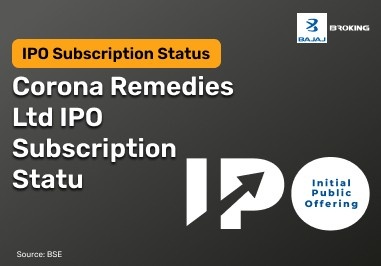Put writing refers to the act of selling a put option contract, where you agree to purchase the underlying asset at a fixed strike price if the buyer decides to exercise it. You, as the option writer, receive a premium upfront. This strategy is often used to gain premium income or to acquire shares at a desired price. However, it also involves the obligation to purchase the asset if the market price drops below the strike price before expiry.
This strategy requires a solid understanding of risk, margin requirements, and market direction. Since you are obligated to take delivery if exercised, put writing may lead to losses if the underlying asset falls significantly. Understanding this obligation is crucial before initiating any position in the derivatives market.
Example
To understand put writing clearly, let us consider a practical illustration that applies to equity derivatives in India. Suppose you are tracking a stock and are willing to acquire it at a price lower than its current market value. Instead of placing a limit order, you sell a put option at your target price. If exercised, you purchase the stock; if not, you retain the premium.
The numbers in the example help explain how risk and reward are connected when you write a put contract. Always factor in lot size, margin, and premiums to evaluate the financial impact of each trade clearly.
Let us break this down into steps:
- You choose a stock currently trading at ₹510 and write a put option with a ₹500 strike price.
- You receive a premium of ₹15 per share for agreeing to buy the stock if it falls below ₹500.
- If the stock remains above ₹500 until expiry, the option expires worthless.
- You keep the ₹15 premium and avoid purchasing the stock.
Each step involves evaluating whether the potential obligation aligns with your comfort level and price expectations. Even if the trade does not get exercised, the premium stays with you.
Pros and cons
Put writing involves both opportunities and risks. You receive an upfront premium, which may be considered an advantage, but you also take on an obligation that could result in capital outflow. Below is a structured look at the benefits and drawbacks of writing puts.
Understanding both sides allows you to assess whether this strategy fits your risk profile and market outlook. Below are the key considerations:
Advantages and disadvantages explained:
- Premium income
You receive an upfront premium, which may provide an income cushion if the option expires unexercised. This may improve the cost basis if you later acquire the stock.
- Stock acquisition at target price
If exercised, you purchase the stock at the strike price, potentially lower than the market price at the time you initiated the trade.
- Downside risk exposure
If the stock price falls far below the strike, you may incur losses as you are obligated to purchase at a higher price than the market.
- Margin requirements
Put writing requires adequate margin, and you may face additional exposure during high volatility periods, affecting your capital allocation.
Each of these points brings its own financial consideration, and you should weigh them carefully against your goals and capital availability.
Put writing example
Consider a scenario where you expect a stock to stay flat or move moderately. Instead of taking a directional trade, you write a put option at a strike price you are comfortable purchasing the stock. This method lets you benefit from time decay and volatility, but also prepares you to acquire the asset if needed.
The example below shows the flow of such a trade from initiation to expiry. You should calculate margins, premiums, and break-even points before entering such positions.
Steps in a sample trade:
- You write a ₹480 strike put when the stock is at ₹500, receiving a ₹10 premium.
- On expiry, if the stock stays above ₹480, the option expires worthless.
- You retain the premium and are not assigned any obligation.
- If the stock closes at ₹470, you are required to purchase at ₹480.
The result of this trade depends on where the stock closes at expiry, which affects whether the option gets exercised or lapses.
Put writing for income
You may explore put writing to generate income through premiums, especially in range-bound or rising markets. This approach is usually adopted with careful strike selection and awareness of the margin impact. The strategy relies on the idea that the underlying may not fall below the strike price.
Here, the focus remains on collecting the premium, and managing exposure without necessarily expecting the stock to be exercised.
Factors influencing income generation:
- Premium value
Higher implied volatility increases premium received, improving potential income. However, higher volatility also means greater risk.
- Strike price selection
Choosing strike prices lower than the current price can increase the probability of the option expiring worthless.
- Contract expiry
Shorter-dated contracts provide quicker premium realisation but involve faster time decay, which affects pricing.
- Capital utilisation
Since margin is locked during the trade, ensure capital efficiency while planning multiple trades.
This approach may be suitable if you aim to collect consistent premiums without acquiring the asset every time.
Writing puts to buy stock
Writing puts can also be used as a method to potentially acquire shares at a price you find favourable. Instead of placing a direct purchase order, you write a put option with a strike at your preferred entry price. If the stock falls and the option is exercised, you end up owning the shares.
This method provides the benefit of collecting premium while waiting for the right opportunity to purchase.
Key aspects to consider:
- Preferred price targeting
You can choose strike prices that match your expected entry point, aligning with your long-term view.
- Lower cost basis
Premium received effectively lowers the cost of acquisition if the stock is assigned.
- Obligation to purchase
If the stock falls significantly, you still have to purchase at the strike price, possibly incurring a paper loss.
- Stock suitability
This method is often considered for fundamentally sound stocks you are willing to hold for the long term.
Understanding these aspects can help you manage acquisition risk while working toward portfolio goals.
Closing a put trade
You are not required to hold a put option trade until expiry. If you choose to exit earlier, you can buy back the option on the exchange. This is referred to as closing the position. The decision to close depends on premium movement, market outlook, or risk exposure.
Timing the exit may impact realised profit or loss depending on the market value of the option at that time.
Considerations when closing trades:
- Premium recovery
If the premium drops significantly after selling, you can buy back the option at a lower cost and retain the difference.
- Loss limitation
If the trade moves against your expectation, closing the position can help contain potential losses.
- Margin release
Exiting the trade may free up blocked margin, improving capital liquidity for other positions.
- Market risk reduction
Closing early reduces exposure to volatility, especially near expiry or during major announcements.
These steps help in dynamically managing positions as market conditions evolve.
What Is Call Writing And Put Writing?
Call writing and put writing are options trading strategies. Call writing involves selling call options, granting the buyer the right to purchase an underlying asset at a specified strike price. The call writer receives a premium but is obligated to sell the asset if the option is exercised. This strategy is used when one expects the asset’s price to remain below the strike price.
Put writing, on the other hand, entails selling put options, giving the investor the option to sell the base asset at a specified strike price. The put writer gets the premium but is obligated to buy the asset if the option is exercised. It is used when one expects the asset’s price to remain over the strike price. Both strategies involve risk and can serve different financial objectives.
Who Should Opt For Put Writing?
Put writing can be an appealing strategy for certain types of investors and traders, but it’s not suitable for everyone. Here are some considerations for who might consider put writing:
- Income-Oriented Investors: Put writing can be an attractive choice for income-oriented investors who are looking to generate regular cash flow. By selling put options, investors can collect option premiums as income, especially in markets with relatively stable or bullish conditions.
- Bullish or Neutral Outlook: Put writing is typically employed when you have a bullish or neutral outlook on the underlying asset. If you believe the asset’s price will remain stable or increase, selling puts can provide you with income while allowing you to potentially acquire the asset at a lower price.
- Risk-Tolerant Investors: Those who are willing to take on the obligation to buy the underlying asset at the strike price should it be required may find put writing suitable. However, it’s important to have the necessary funds or margin available and to be comfortable with the associated risks.
- Portfolio Managers and Institutions: Professional portfolio managers and institutional investors often use put writing as a risk management tool to enhance portfolio returns or hedge against potential market downturns.
- Options Traders with a Clear Strategy: Experienced options traders who have a well-defined strategy for managing risk, including using stop-loss orders or rolling positions, may consider put writing as part of their overall trading approach.
- Asset Owners: Individuals who already own the underlying asset and want to generate additional income from it can sell covered puts. This involves selling put options on an asset you already own, using it as collateral.
It’s important to note that put writing is not suitable for those who have a strongly bearish outlook on the underlying asset, as it exposes you to the risk of being obligated to purchase the asset at the strike price. Additionally, those with limited risk tolerance, insufficient capital or margin, or little experience with options trading should exercise caution and consider other strategies.
Advantages And Disadvantages Of Put Writing
Put writing, like any financial strategy, has its own set of pros and cons. Here are the key advantages and disadvantages of put writing:
Pros:
- Income Generation: Put writing can provide a steady stream of income in the form of option premiums. Investors can generate regular cash flow by selling put options, particularly in stable or bullish markets.
- Portfolio Enhancement: This strategy can enhance portfolio returns, especially in flat or slightly bullish markets, as option premiums can boost overall performance.
- Hedging Tool: Put writing can serve as a form of insurance by allowing investors to hedge against potential declines in the value of their holdings. It can provide downside protection for existing positions.
- Versatility: Put writing can be used on a variety of underlying assets, making it a versatile strategy for different investment goals and asset classes.
Cons:
- Obligation to Buy: As a put writer, you have an obligation to purchase the underlying asset at the strike price if the option is exercised. This can result in substantial losses if the asset’s price declines significantly.
- Opportunity Cost: If the market experiences a significant price increase in the underlying asset, the opportunity cost of missing out on potential profits can be high.
- Margin and Capital Requirements: To engage in put writing, you may need to have a substantial amount of capital or margin in your account, depending on the size of the position and the requirements of your broker.
- Limited Profit Potential: The potential profits from put writing are capped at the premium received when selling the option. There is no unlimited profit potential like buying the underlying asset itself.
- Market Risk: Put writing exposes you to market risk, as you may be forced to buy an asset that’s significantly decreased in value. Market conditions can change rapidly, and this strategy may not always provide adequate protection.
- Risk Management Complexity: Effective risk management is crucial when using this strategy. Decisions about when to close positions or roll them to a later expiration date can be complex and require experience.
Conclusion
Put writing is a versatile options trading strategy with both advantages and risks. It offers income potential, portfolio enhancement, and downside protection, making it a valuable tool for income-oriented investors and those with a neutral to slightly bullish outlook on an asset. However, the obligation to buy the underlying asset can lead to substantial losses if its price significantly declines. Effective risk management and a clear understanding of market dynamics are crucial for success. Put writing is not a one-size-fits-all strategy and should be carefully considered in the context of one’s financial goals and risk tolerance. It can be a valuable addition to a diversified investment approach when used judiciously.
Disclaimer: Investments in the securities market are subject to market risk, read all related documents carefully before investing.
This content is for educational purposes only.














